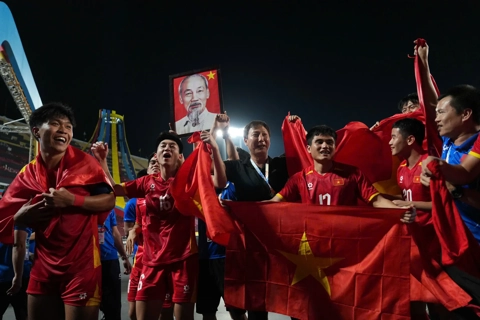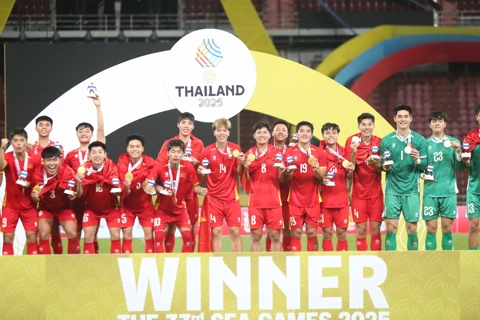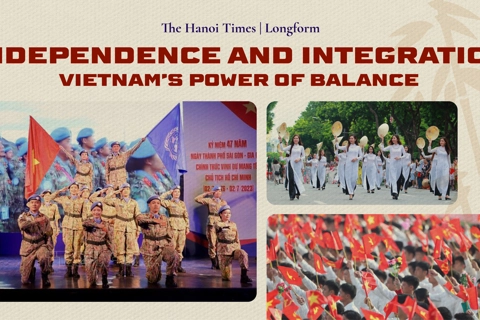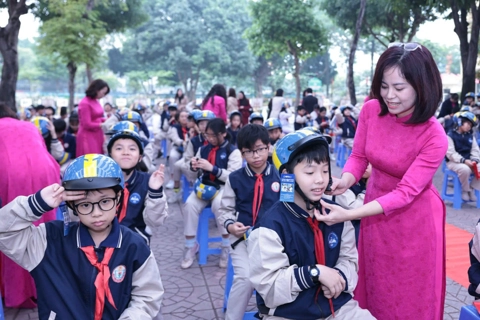Vietnam
30 April 1975 Victory – symbol of solidarity and strength
Apr 30, 2015 / 11:57 AM
Vietnam’s victory in the American resistance war 38 years ago was due to the convergence of many factors. The most important element was the strength of national solidarity and international unity. .
Vietnam’s resistance war against the American imperialists revealed a great unity. The entire Vietnamese people united into a firm bloc that nothing could shake. In the northern region, the motto ‘all for the frontline, all for defeating the American invaders’ turned into action for millions of Vietnamese citizens.

Emulation movements in the southern region drew people from all walks of life-young people, students, women, farmers, and workers.
Civilians and armed forces in the southern provinces combined combat, political struggle, agitation, and propaganda throughout three strategic regions: the forest, farmland, and towns.
Civilians and armed forces in the southern provinces combined combat, political struggle, agitation, and propaganda throughout three strategic regions: the forest, farmland, and towns.

Major-general Nguyen Cong Trang, the former Vice Political Commissioner of Huong Giang Corps, who witnessed the unconditional surrender of President Duong Van Minh’s cabinet and the government of the Republic of Vietnam, recalled that "more than 100 private cars carried the soldiers of corps 2 to liberate Saigon. Some families helped us get to Saigon in their cars, asking in return only a note certifying that they transported army forces to liberate the city."

"When we crossed a river whose bridge had been destroyed by the enemy, the locals us canoes, floats, and boats. They also showed us shortcuts and detours by which to enter the city. In some cases, they even helped us build military access roads," Trang said.

Gaining the support of people from all strata in the struggle against the American invaders was thanks to the patriotism that united the nation. Senior lieutenant-general Phan Trung Kien, a former Deputy Defense Minister, said "the liberation of Vietnam’s southern region and reunification of the country proved the strength of solidarity without racial or religious discrimination."
"The entire Vietnamese people and army jointly participated in this resistance war under the leadership of President Ho Chi Minh and the Communist Party of Vietnam," Kien added,
The triumph on April 30th, 1975, is the evidence of the unanimity, consensus, and the determination of both the Vietnamese army and the people, which became a sharp weapon to fight the US professional military forces.
American veteran Barry Romo who took part in the Vietnam War said, "there was a determination that we saw in the Vietnamese, every one. The determination of the Vietnamese people was so great that there would be still no way that bombing was ever going to force them into doing anything."
"The entire Vietnamese people and army jointly participated in this resistance war under the leadership of President Ho Chi Minh and the Communist Party of Vietnam," Kien added,
The triumph on April 30th, 1975, is the evidence of the unanimity, consensus, and the determination of both the Vietnamese army and the people, which became a sharp weapon to fight the US professional military forces.
American veteran Barry Romo who took part in the Vietnam War said, "there was a determination that we saw in the Vietnamese, every one. The determination of the Vietnamese people was so great that there would be still no way that bombing was ever going to force them into doing anything."

The victory in the spring of 1975 was thanks in part to international movements to support the Vietnamese people. Organizations in favor of Vietnam’s resistance war in Europe, Asia, Africa, and Latin America took to the streets to protest the US war in Vietnam.
Former Vice Chair of the Party’s Central Committee’s External Relations Department Trinh Ngoc Thai said, "the public strength exerted pressure against the US’ invasion policy and became a great encouragement for Vietnamese people. This front united people around the world in support of Vietnam."
Former Vice Chair of the Party’s Central Committee’s External Relations Department Trinh Ngoc Thai said, "the public strength exerted pressure against the US’ invasion policy and became a great encouragement for Vietnamese people. This front united people around the world in support of Vietnam."








